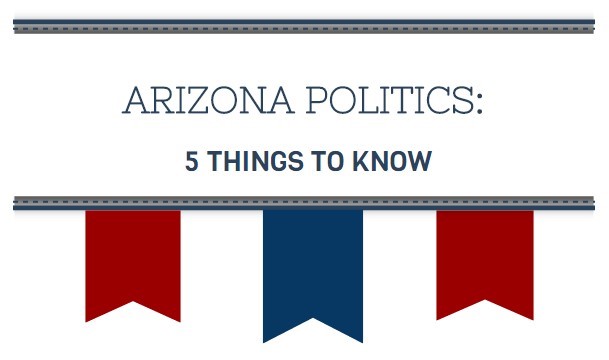October 11,2018 | TRIADVOCATES

1. Early ballots dropped today, and, as rumors abound about potential Democratic gains, most political pundits have been keeping a close eye on the Arizona State Senate. However, the potential “blue wave” could also impact several seats currently held by Republicans in the House. In northern Arizona (LD6), Democratic newcomer Felicia French is running a strong campaign and could knock off one of the two Republicans on the ticket. Traditionally, Chandler (LD17), which has traditionally been a solid Republican district, now has a stronger Democratic presence. The shift has resulted in a heated race between Republican Nora Ellen and Democratic newcomer Jennifer Pawlik. And in the Old Pueblo (LD10), Republican incumbent Todd Clodfelter is facing an uphill battle to keep his House seat as the Democrats are eager to knock him off. It would be difficult for the Democrats to take the House, but we expect them to pick up a few seats this election cycle.
2. Democrats are fired up and energized over national politics, hoping for a “blue wave” in November—and they’re spending a lot of green to get there, especially when it comes to races for the Arizona State Senate. With a current 17-13 split, Dems need to pick up three seats to flip the leadership control, or at least two seats to create a 15-15 split. (FYI: the last time Senate Dems were in control was 26 years ago and the only term the Senate had a 15-15 split was in 2002.) In recent election cycles, the key Senate races have been LD6, LD8, LD18 and LD28. This election cycle, the focus has expanded to LD17, LD20 and LD21, totaling seven key races. LD28 is the most expensive race with Republican Sen. Kate Brophy McGee significantly outraising her opponent in what is considered to be the most competitive district in the state. In LD21, Republican Sen. Rick Gray faces Kathy Knecht—an Independent touting her experience on a school governing board. If elected, Knecht will be the first Independent member to ever serve in the state Senate, which would certainly generate some interesting caucus dynamics.
3. What appeared to be a neck-and-neck race for governor earlier this summer has turned into a double-digit lead for Republican incumbent Gov. Doug Ducey over Democratic challenger David Garcia. Garcia, a college professor, drained most of his campaign dollars in the primary and, despite having support from the #REDforED teacher base, has only a small fraction of the fundraising resources Ducey is working with. Unless Garcia pulls off a Hail Mary over the next month, it’s looking like Ducey will be back to serve a second term as governor of Arizona.
4. While the race for governor is attracting most of the media attention, all constitutional row officers are on the ballot this cycle. Currently, Republicans control all statewide offices. Polling on these campaigns is limited but it appears that the GOP has reasonable leads on all races. The ones to watch are superintendent of public instruction, where first-time candidate and school teacher Kathy Hoffman is facing off against former congressman and gubernatorial candidate Frank Riggs. In addition, the Republicans running for the Arizona Corporation Commission, Rodney Glassman and Justin Olson, face stiff competition from Democrats Sandra Kennedy and Kiana Sears. While relatively little money has been spent on either of these races, the Democrats could benefit substantially if the “blue wave” hits Arizona this November.
5. The race is on for the next mayor of Phoenix. Four candidates will be on the ballot: two former council members, both Democrats, Kate Gallego and Daniel Valenzuela; Republican political newcomer Moses Sanchez; and Libertarian Nicholas Sarwark. It’s widely speculated that the race will come down to Gallego and Valenzuela, but, in the current political environment, outsiders are performing well at the polls, so it’s not over ‘til it’s over. And even when it’s over, it might not actually be over. Brace yourself, Phoenicians—the long campaign season will most likely be even longer. If one mayoral candidate does not earn more than 50 percent of the vote in November, the election will go to a runoff on March 12, 2019. Looks like a few more months of yard signs, political ads and more campaign mail than we’ll know what to do with.
